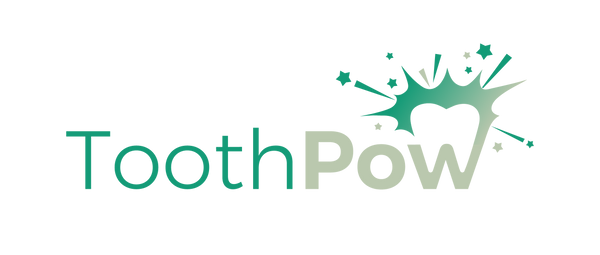Introduction
Oil pulling is an ancient practice rooted in Ayurvedic medicine, dating back over 3,000 years. This method involves swishing oil in the mouth to purportedly remove toxins and improve oral health. With the resurgence of natural and holistic health practices, oil pulling has regained popularity, sparking debates over its efficacy and scientific backing. This comprehensive guide delves into the history, methodology, benefits, and controversies surrounding oil pulling.
The History of Oil Pulling
Ancient Ayurvedic Roots
Oil pulling, known as "Kavala" or "Gandusha" in Ayurveda, has been a cornerstone of traditional Indian medicine. Ayurvedic texts suggest that oil pulling can cure over 30 systemic diseases, ranging from headaches to diabetes. The practice involves using sesame or sunflower oil, although modern variations include coconut oil due to its antimicrobial properties.
Modern Resurgence
In recent decades, oil pulling has seen a revival, particularly among those seeking natural alternatives to conventional dental products. Prominent figures in the health and wellness community have endorsed it, leading to its spread in the West.
The Methodology of Oil Pulling
How to Perform Oil Pulling
- Choose Your Oil: Common oils used include coconut, sesame, and sunflower oil.
- Measure the Oil: Take about one tablespoon of oil.
- Swish: Swish the oil around your mouth for 15-20 minutes. Ensure it reaches all areas of your mouth.
- Spit Out: Spit the oil into a trash can, not the sink, to avoid clogging.
- Rinse and Brush: Rinse your mouth with warm water and brush your teeth as usual.
Recommended Frequency
For optimal benefits, it's recommended to practice oil pulling daily, preferably in the morning before eating or drinking.

The Benefits of Oil Pulling
Oral Health Benefits
-
Reduction of Harmful Bacteria: Studies have shown that oil pulling can significantly reduce the number of harmful bacteria in the mouth, such as Streptococcus mutans, which is a major contributor to tooth decay.
-
Plaque and Gingivitis Reduction: Regular oil pulling can help reduce plaque formation and gingivitis, as supported by a study published in the Journal of Clinical and Diagnostic Research.
-
Whitening of Teeth: Anecdotal evidence suggests that oil pulling can naturally whiten teeth by removing stains over time.
-
Fresh Breath: By eliminating bacteria that cause bad breath, oil pulling can lead to fresher breath.
Systemic Health Benefits
-
Detoxification: Proponents claim that oil pulling detoxifies the body by removing toxins. While this is debated, some studies suggest a reduction in certain toxins.
-
Improved Skin Health: Some users report clearer skin, attributing it to the removal of toxins through oil pulling.
-
Alleviation of Headaches and Migraines: Some anecdotal reports suggest that oil pulling can help reduce the frequency and severity of headaches and migraines.
Scientific Studies and Evidence
- Journal of Ayurveda and Integrative Medicine: A study published in this journal found that oil pulling with sesame oil led to a significant reduction in Streptococcus mutans count, comparable to chlorhexidine mouthwash.
- Journal of Clinical and Diagnostic Research: Another study highlighted the effectiveness of oil pulling in reducing plaque and gingivitis.
Controversies and Criticisms
Lack of Extensive Scientific Research
While some studies support the benefits of oil pulling, critics argue that more extensive, long-term research is needed to conclusively prove its efficacy. Many existing studies have small sample sizes or lack rigorous methodology.
Potential Risks
- Lipoid Pneumonia: Aspiration of oil into the lungs can cause lipoid pneumonia, a rare but serious condition.
- Digestive Issues: Swallowing the oil, which now contains toxins and bacteria, can lead to digestive discomfort.
- Over-Reliance on Oil Pulling: Some dental professionals caution against relying solely on oil pulling for oral hygiene, emphasizing the importance of brushing and flossing.
Expert Opinions
- American Dental Association (ADA): The ADA does not endorse oil pulling due to the lack of sufficient scientific evidence.
- Dental Professionals: Many dental professionals recommend viewing oil pulling as a supplementary practice rather than a replacement for conventional oral hygiene methods.
How to Integrate Oil Pulling into Your Routine
Combining with Conventional Practices
Oil pulling can be integrated into your daily oral care routine alongside brushing, flossing, and using mouthwash. This balanced approach ensures comprehensive oral hygiene.
Choosing the Right Oil
- Coconut Oil: Known for its antimicrobial properties and pleasant taste.
- Sesame Oil: Traditionally used in Ayurveda and has a mild flavor.
- Sunflower Oil: Another traditional option with a neutral taste.
Practical Tips
- Start Slow: Begin with 5-10 minutes and gradually increase to 15-20 minutes.
- Consistency is Key: Regular practice yields better results.
- Listen to Your Body: If you experience any adverse effects, consult a dental professional.
The Future of Oil Pulling
Research and Developments
As interest in natural and holistic health practices grows, more research is likely to focus on oil pulling. Future studies may provide clearer insights into its benefits and potential risks.
Integrative Approaches
Integrative medicine, which combines conventional and alternative practices, may further explore the role of oil pulling in overall health and wellness.
Conclusion
Oil pulling, an ancient Ayurvedic practice, offers potential benefits for oral and systemic health. While it should not replace conventional dental hygiene practices, it can be a valuable addition to your routine. As with any health practice, it’s essential to stay informed and consult with healthcare professionals. The growing body of research, combined with anecdotal evidence, suggests that oil pulling may indeed be more than just a modern fad.
References
- Journal of Ayurveda and Integrative Medicine
- Journal of Clinical and Diagnostic Research
- American Dental Association
- National Center for Biotechnology Information (NCBI)
- Mayo Clinic
For more insightful articles and tips on oral health, visit ToothPow.com.

